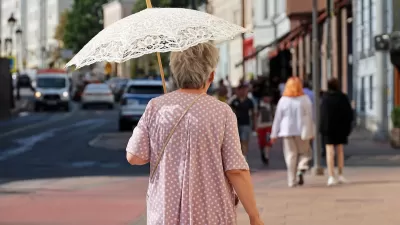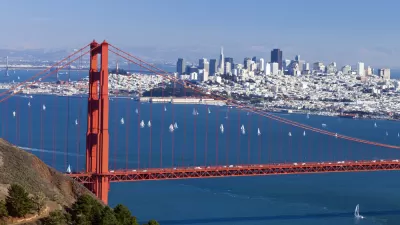What do three-pack-a-day smoking habits, triple-decker cheese burgers and sprawl have in common? They all offer immediate gratification and deferred consequences. But now the bill's coming due. Ben Brown lays out some ways to face the music.
Brown takes as his jumping-off point the recent essay in Foreign Policy by Patrick Doherty, Director of the Smart Strategy Initiative at the New America Foundation, on the need for a new "Grand Strategy" in America to replace the outdated foundations of our economy, foreign policy, and development patterns.
"The world economy is more complicated, interconnected and fragile than we imagined. The weather is getting weird. The old fixes don’t seem to be working....America has to get its act together and lead a global reset," explains Brown. "Those of us with a focus on community and regional planning will be nodding at a key item on Doherty’s fix-it list — walkable communities..."
"Smart Growthers have been arguing these points for years. And in these blog posts we’ve made the connection between compact, walkable, mixed-use planning and community health and prosperity a persistent theme. Still, it’s reassuring to see anti-sprawl perspectives embedded into a global Grand Strategy. Same with a couple other recent reality goosings."
Brown delves further into planning challenges and opportunities, particularly to do with health and aging.
FULL STORY: The End is Near, Part II: Leveraging imminent doom as ‘Grand Strategy’

Trump Administration Could Effectively End Housing Voucher Program
Federal officials are eyeing major cuts to the Section 8 program that helps millions of low-income households pay rent.

Planetizen Federal Action Tracker
A weekly monitor of how Trump’s orders and actions are impacting planners and planning in America.

Ken Jennings Launches Transit Web Series
The Jeopardy champ wants you to ride public transit.

Sacramento Plans ‘Quick-Build’ Road Safety Projects
The city wants to accelerate small-scale safety improvements that use low-cost equipment to make an impact at dangerous intersections.

How Project Connect Would Change ‘The Drag’
A popular — and sometimes deadly — Austin road will exchange car lanes for light rail.

Milwaukee Road to Get Complete Streets Upgrades
The city will reduce vehicle lanes and build a protected multi-use trail including bioswales and other water retention features on its ‘secret highway.’
Urban Design for Planners 1: Software Tools
This six-course series explores essential urban design concepts using open source software and equips planners with the tools they need to participate fully in the urban design process.
Planning for Universal Design
Learn the tools for implementing Universal Design in planning regulations.
Ada County Highway District
Clanton & Associates, Inc.
Jessamine County Fiscal Court
Institute for Housing and Urban Development Studies (IHS)
City of Grandview
Harvard GSD Executive Education
Toledo-Lucas County Plan Commissions
Salt Lake City
NYU Wagner Graduate School of Public Service




























